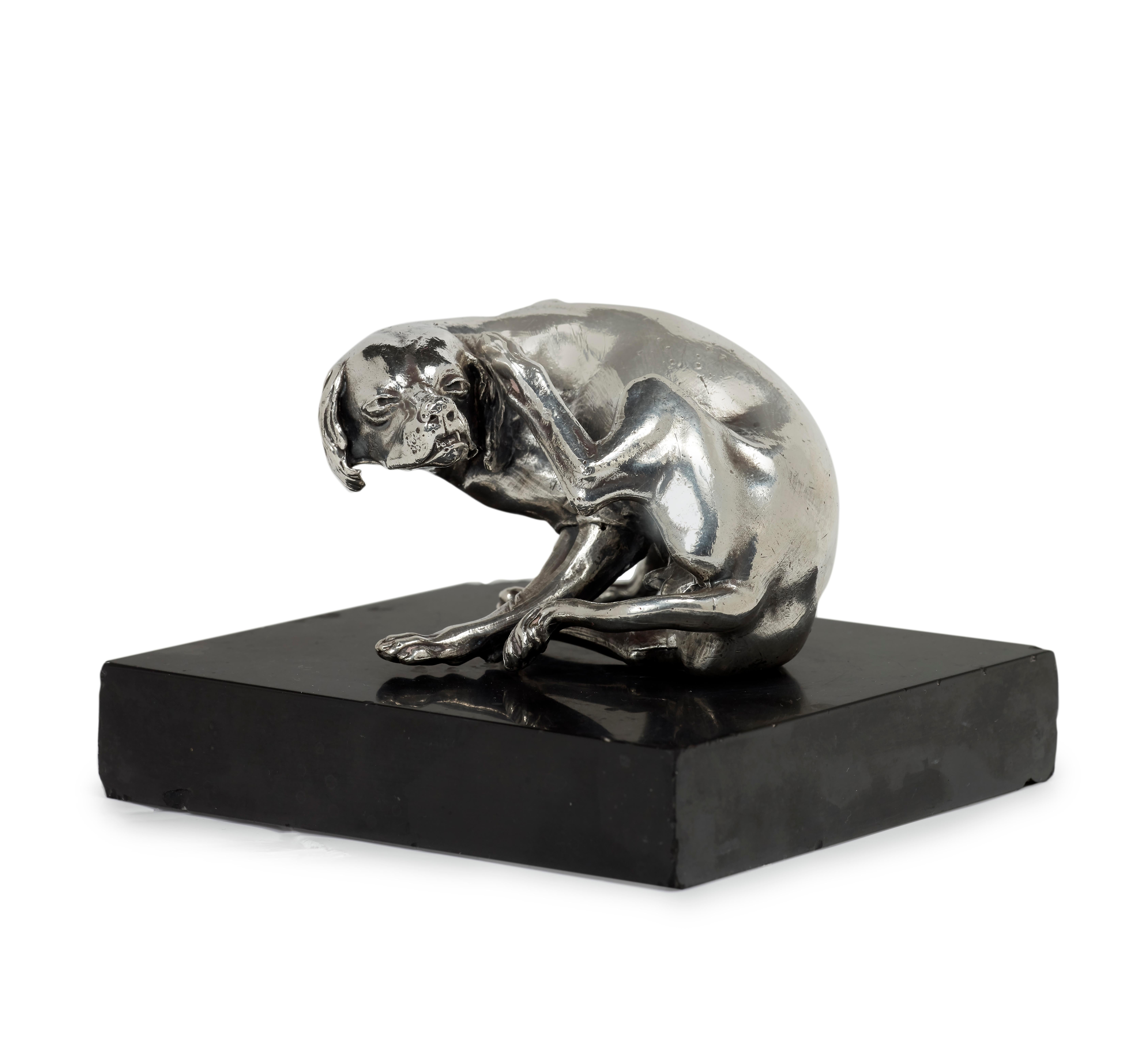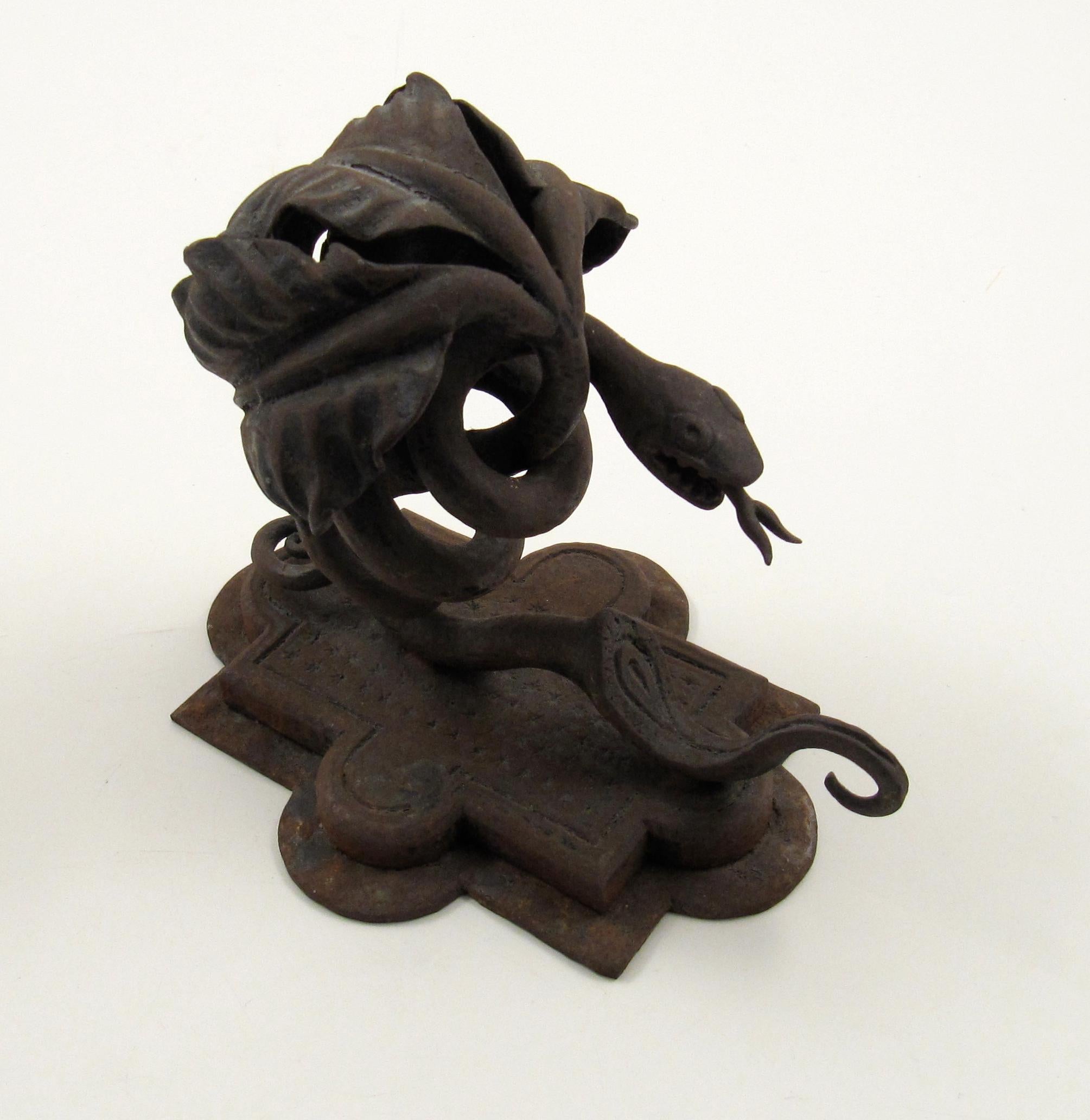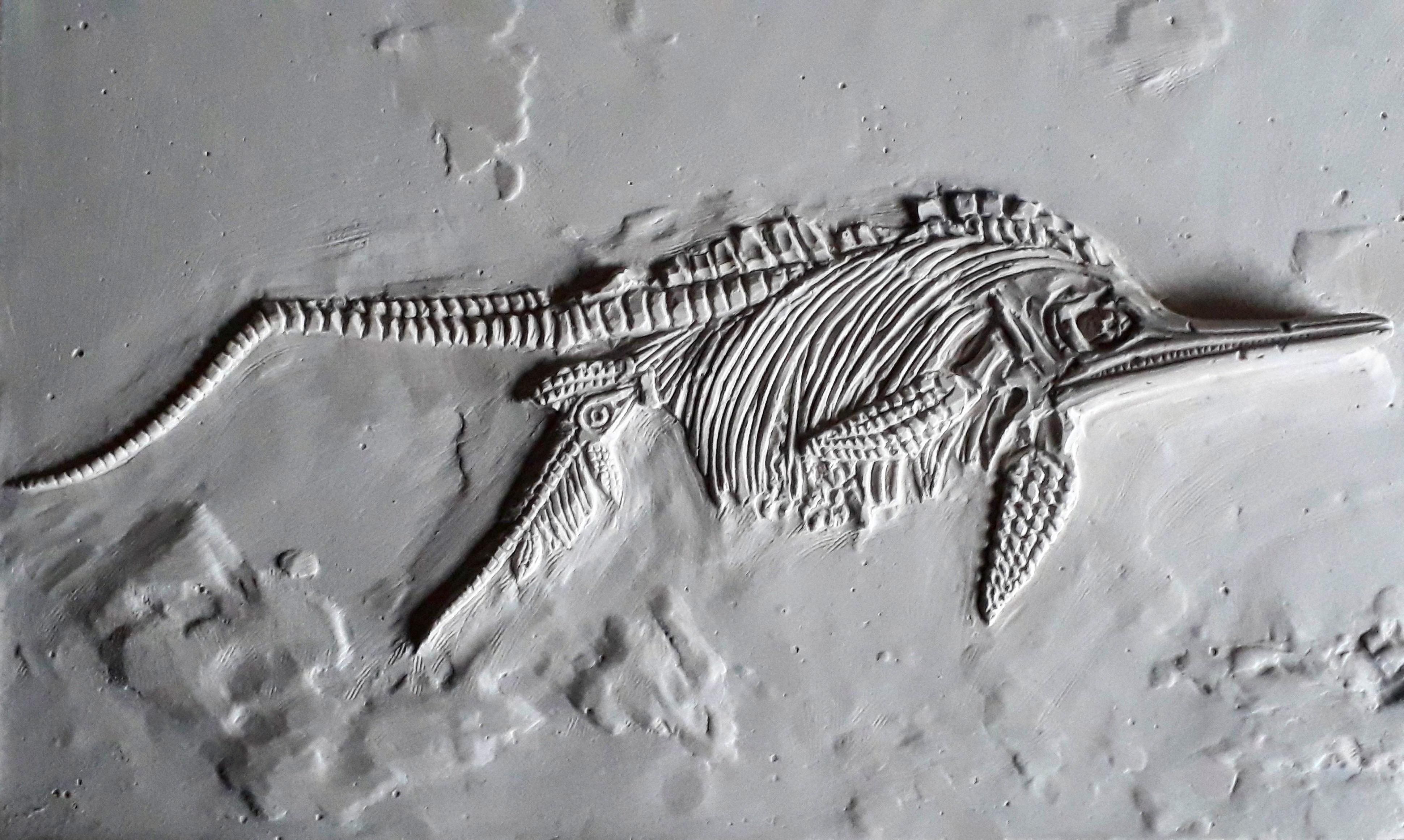Items Similar to A sculpture - amulet with two dolphins. 19th century
Video Loading
Want more images or videos?
Request additional images or videos from the seller
1 of 9
UnknownA sculpture - amulet with two dolphins. 19th century
About the Item
A coral sculpture - amulet with two dolphins, fruits and leaves, symbols of abundance and life.
Nineteenth century.
Weight 17gr
Created from a single sprig of coral, carved, engraved and polished.
Italian workmanship of the Trapani tradition, but difficult to place more precisely, as the Trapani artisans moved around Italy over time, forming, among other things, a lesser-known processing center in Livorno (Tuscany), the place of probable creation of this splendid object.
Sculpture with two fish, probably two dolphins, or 2 marine monsters, which transform themselves into a kind of cornucopia, from which fruits emerge in abundance.
The gift to the newborn therefore had a sense of protection and above all of future male fertility. The peculiarity of this small ancient sculpture lies in the double fish, while usually it was a fish (or a snake).
In the culture of southern Italy it was traditional to give a thread of worked coral to a newborn male: amulets in the shape of animals/sea monsters called "SCURSUNA" (plural of SCURSUNI).
It is a word from the Sicilian dialect which generically designates a reptile, or various species of cylindrical and elongated snakes, venomous and not. In the popular imagination they were traditionally associated with bivalent authorities, sometimes negative, as bearers of poison, sometimes positive, as protective spirits.
The gift to the newborn therefore had a sense of protection and above all of future male fertility. The peculiarity of this small ancient sculpture lies in the double fish, while usually it was a fish (or a snake).
- Dimensions:Height: 1.89 in (4.8 cm)Width: 2.96 in (7.5 cm)Depth: 0.6 in (1.5 cm)
- Medium:
- Movement & Style:
- Period:
- Condition:
- Gallery Location:Firenze, IT
- Reference Number:1stDibs: LU2464214148562
About the Seller
4.7
Platinum Seller
These expertly vetted sellers are 1stDibs' most experienced sellers and are rated highest by our customers.
Established in 2016
1stDibs seller since 2023
27 sales on 1stDibs
Typical response time: 5 hours
- ShippingRetrieving quote...Ships From: Firenze, Italy
- Return PolicyA return for this item may be initiated within 10 days of delivery.
More From This SellerView All
- Italian Mid 19th century White Carrara Marble bust. Portrait of young male.Located in Firenze, ITItalian Portrait White Marble Bust in a Heroic Attitude. Carrara statuary Marble. Tuscan school. Circa 1850. Bust depicting a young man with bare shoulders. This model draws inspira...Category
Mid-19th Century Academic Figurative Sculptures
MaterialsMarble
- Guatemala. Maschera di Baila de la Conquista. Inizio XX secoloLocated in Firenze, ITQuesta maschera guatemalteca del inizio del XX secolo, scolpita in legno e utilizzata per la danza della Riconquista (Baila de la Conquista) , raffigura vividamente un uomo europeo, ...Category
Early 20th Century Folk Art Figurative Sculptures
MaterialsWood, Intaglio
- Coral Brooche. Early 20th century Italian Cameo with woman profile.Located in Firenze, ITFREE SHIPPING WORLDWIDE Early 20th century Italian cameo with woman profile. Hand carved cameo. Dimensions: H 3.5cm x W 3cm Italian manufactory of early 20th century. Probably ...Category
Mid-20th Century Art Nouveau More Art
MaterialsSilver
- Goldscheider - Vienna, Wall Mask, 1940s-50s.Located in Firenze, ITGoldscheider - Vienna Wall mask, 1940s-50s. Original paper label at the bottom: Goldsheider. Weltmark of the keramik. Polychrome majolica terracotta, mark on the back and printed num...Category
1940s Art Deco Figurative Sculptures
MaterialsCeramic
- Royal Copehaghen. Vase with Sailing Ship in the Sea. Danish porcelain. Early 20th century.Located in Firenze, ITRoyal Copehaghen. Vase with Sailing Ship in the Sea. Danish porcelain. Early 20th century. Royal Copenhagen. Denmark. Vase with sailing ship in the sea. Hand-painted porcelain wi...Category
Early 20th Century Art Nouveau Figurative Sculptures
MaterialsPorcelain
- Raro busto Art Nouveau in alabastro e micromosaicoLocated in Firenze, IT"Raro busto Art Nouveau in alabastro e micromosaico. " Il busto di una giovane ragazza. Epoca Art Nouveau, con un rarissimo lavoro in alabastro e micromosaico. Firenze, circa 1900. U...Category
19th Century Art Nouveau Figurative Sculptures
MaterialsAlabaster, Marble
You May Also Like
- Equisetum - Mineral and vegetal green nuances on marbleLocated in Milan, ITJessica Carroll is an Italo- American sculptor (b. 1961), member of an artistic family (her father was a painter, her mother a writer and her grandfather directed the movie Totò, Pep...Category
2010s Naturalistic Figurative Sculptures
MaterialsMarble
- Dances with TreesLocated in Washington Depot,, CTBroken limbs and the abstraction of the bodies are meant to suggest that the works have been subjected to the vicissitudes of time, decay by the elements and the damages caused by un...Category
2010s Naturalistic Figurative Sculptures
MaterialsBronze
- Dog scratching its earLocated in PARIS, FRThis amusing naturalistic sculpture in silver-plated pewter was probably made in the 17th century by Georg Schweigger. Inspired by a model created by another Nuremberg sculptor, Peter Flötner, it bears witness to the persistence during the baroque era of the naturalistic taste that emerged in the Renaissance. Intended as an ornament for some Kunstkammer, or cabinet of curiosities, this sculpture was a great success, as can be seen from the presence of similar works in many European museums. 1. Georg Schweigger Georg Schweigger was a baroque sculptor and medal founder from Nuremberg, known mainly for his small-scale works in stone, carved wood and cast metal. His only large-scale work, the Neptune Fountain, has been in the Petershof Palace, the summer residence of the Tsars near St. Petersburg, since 1797. This monumental sculpture demonstrates his taste for the representation of movement, which we find in this small piece, inspired, as we shall see, by earlier models. 2. The success of a naturalistic theme As is often the case in the history of art, the source of the Dog scratching his ear theme probably comes from an engraving, and more precisely from one made in Strasbourg in 1480 or in Aschaffenburg in 1481 by the Master of the Housebook, an anonymous engraver working in southern Germany at the end of the 15th century. This engraving seems to have been Peter Flötner’s (1490 - 1546) source of inspiration. Peter Flötner was a sculptor and engraver who settled in Nuremberg in 1522. The Louvre Museum also has a gilded lead statuette dated between 1500 and 1515 (on deposit at the Musée de L'Œuvre in Strasbourg), which in turn is thought to have served as a model for other known statuettes. This model was later taken up by the Frenchman Barthélemy Prieur...Category
17th Century Naturalistic Figurative Sculptures
MaterialsMarble, Silver
- Symbolist Wrought Iron Sculpture 1890 / 1920 of a Serpent coiled in the TreeLocated in Meinisberg, CHSymbolist Wrought Iron Sculpture of a Snake coiled around a Tree • Height, ca. 13 cm • Width, ca. 15.5 cm (measured at the base) • Depth, ca. 11 cm (Measured at the base) • Weight, ...Category
Late 19th Century Naturalistic Figurative Sculptures
MaterialsIron
- Stenopterygius QuadriscissusLocated in Oswestry, GBStenopterygius quadriscissus is an ichthyosaur, an extinct animal that lived during the Jurassic period whose body shape closely resembled that of today's fast-swimming fishes such a...Category
2010s Naturalistic Figurative Sculptures
MaterialsBronze
- Snail shellLocated in Oswestry, GBAlways greatly fascinated and sculpturally inspired by a simple yet geometrically complex snail shell. I moulded an actual shell and modelled the base. However the technical difficul...Category
21st Century and Contemporary Naturalistic Figurative Sculptures
MaterialsBronze





